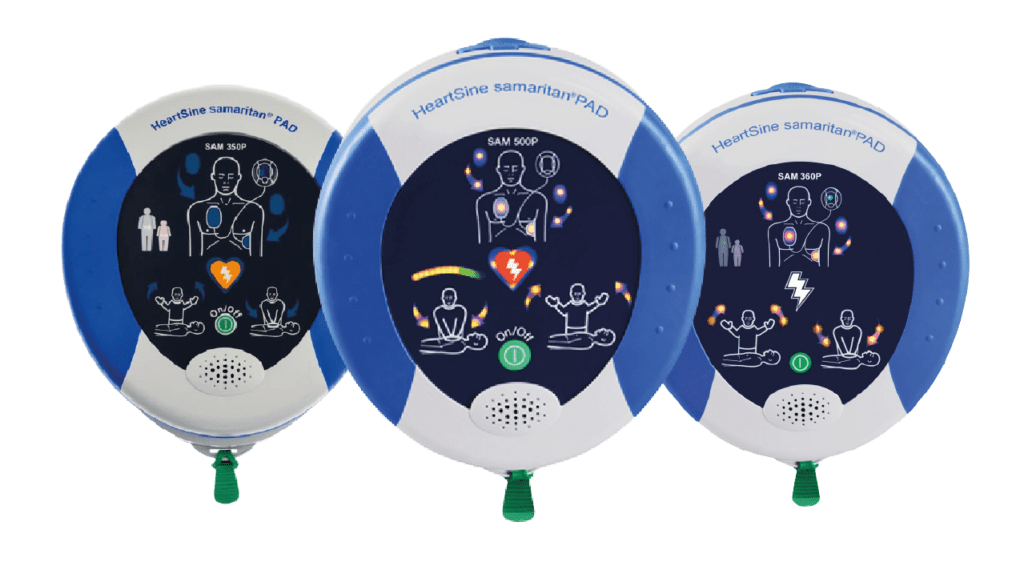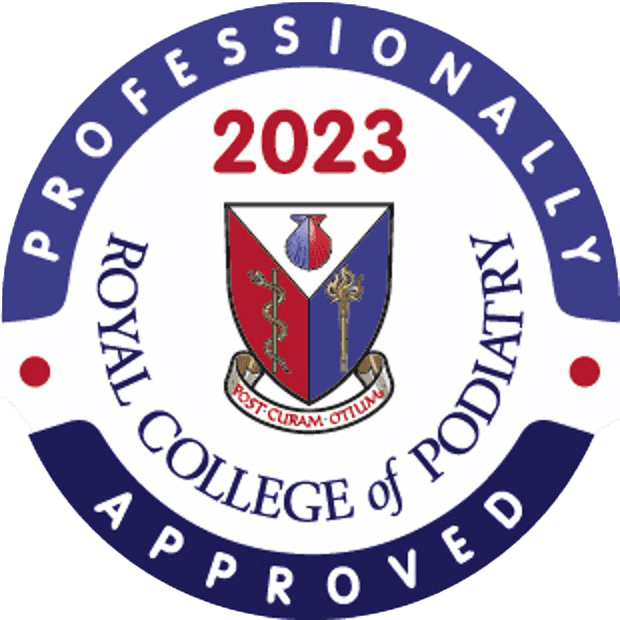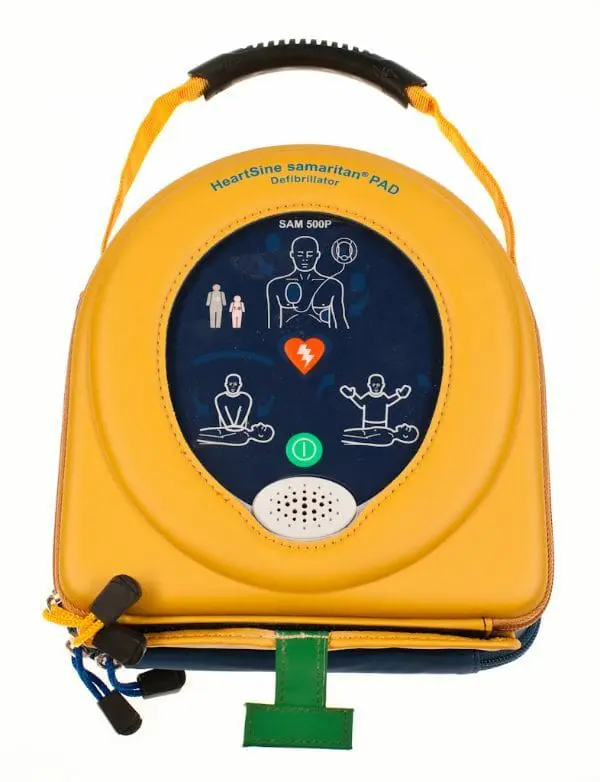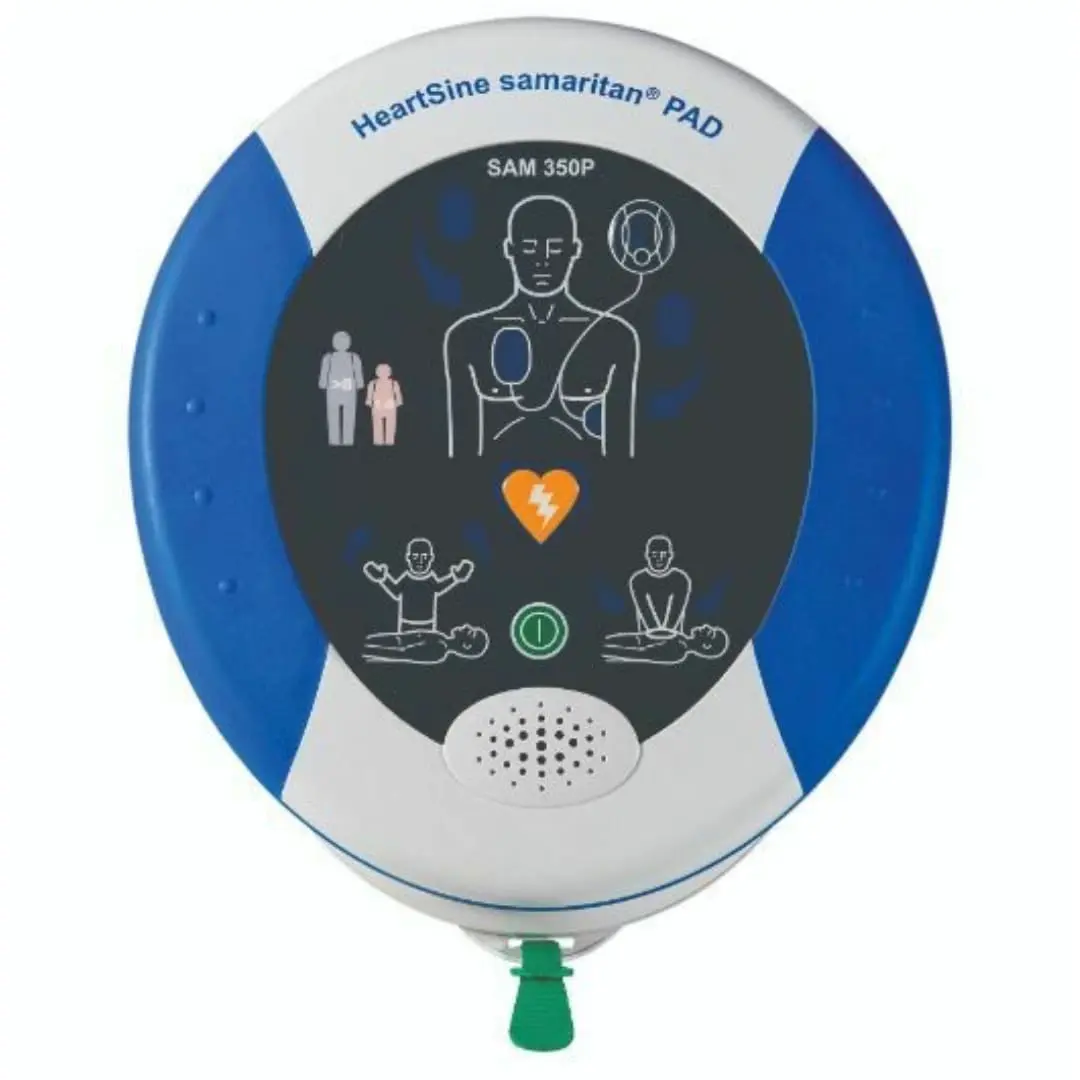The HeartSine 500P holds Professionally Approved status with the Royal College of Podiatry and is recommended by them to their members.
Use Discount Code 'RCPOD' At Checkout For 10% Discount
Why Not Consider Updating to a Defibrillator Package
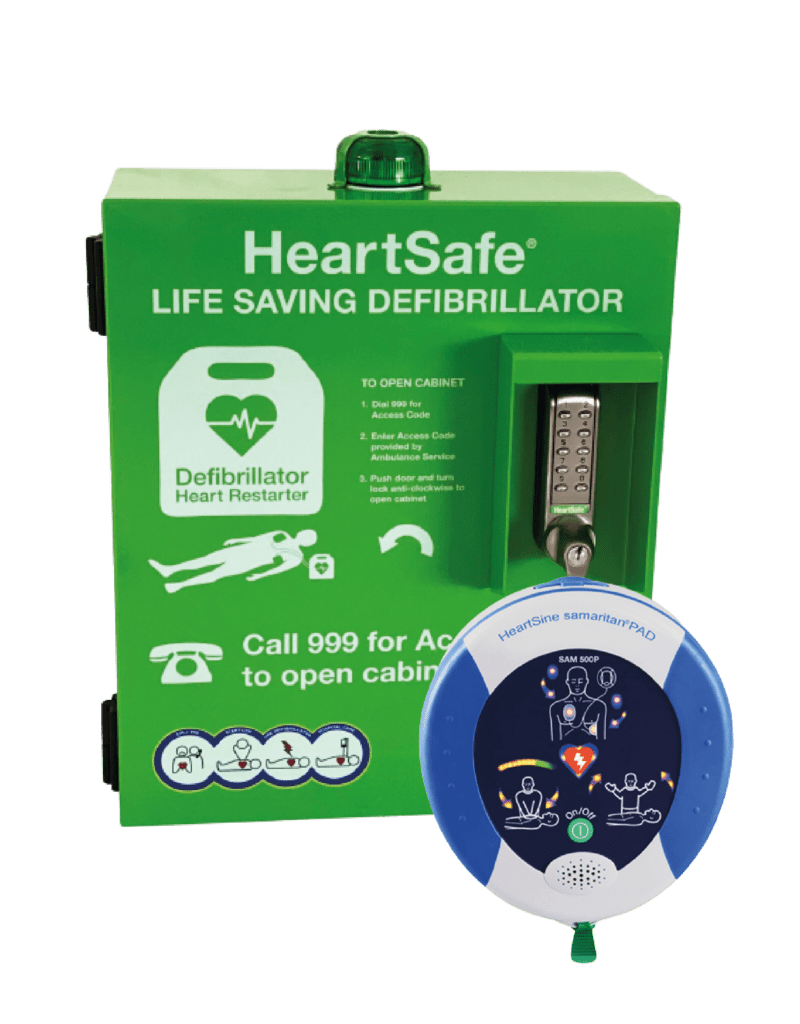
Store your defibrillator externally for easily accessible to the public
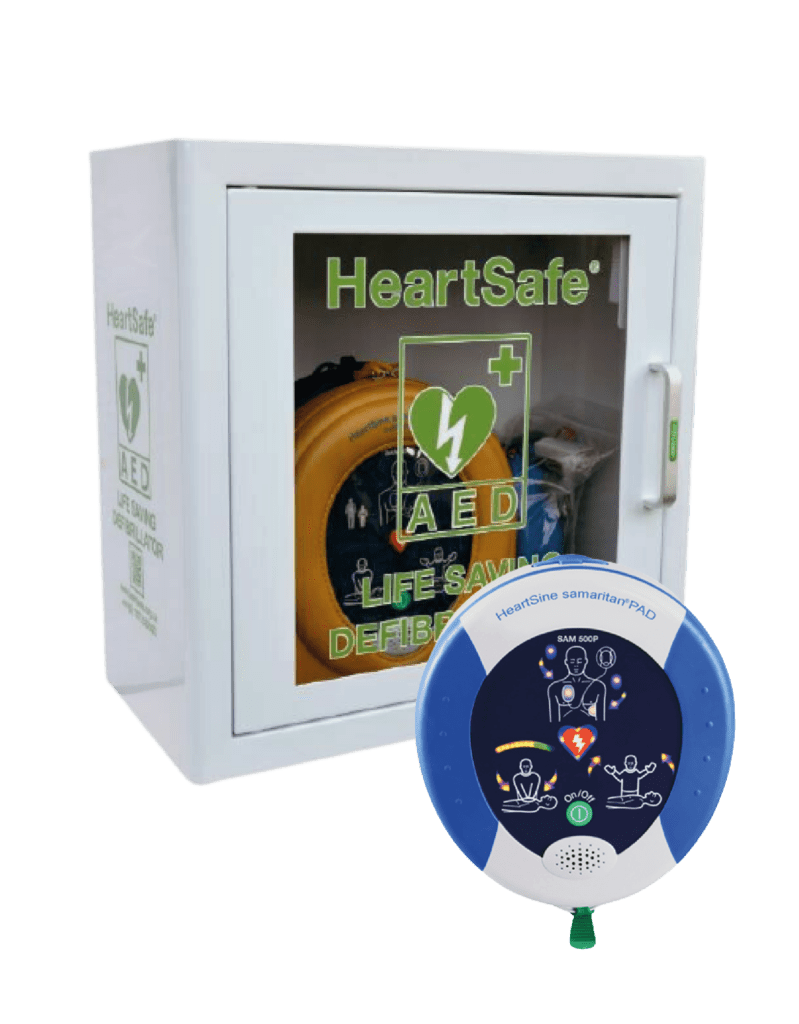
Store your defibrillator internally for use in emergency situations
500P Guide
How to use the HeartSine 500P
How to maintain the HeartSine 500P
360P Guide
How to set up your HeartSine 360P
How to use your HeartSine 360P on an adult
350P Guide
How to set up your HeartSine 350P
How to use your HeartSine 350P on an adult
FAQs
Should you be approached, our strong advice is to never purchase a second-hand defibrillator unless you have the original certificate of purchase and full history of its use and previous owner’s details, which can then be verified and has not been reported on a lost or stolen list.
Sadly there have recently been reported thefts of AEDs from unlocked and locked cabinets and it can only be assumed that these despicable people who show no regard or value of other people’s lives believe a stolen device has some monetary value.
A second-hand defibrillator (AED) has NO monetary value. Each defibrillator has a serial number and can always be traced. AED’s need constant daily/weekly checking and monitoring – without such monitored governance they may not operate correctly or at all if required to be used at the time of an emergency.
If anyone approaches you selling or advertising an AED – treat the offer with great caution – you may be wasting your money. More importantly, putting a life at risk. If you can, report it to your local police or ambulance service or AED Locator on 01275 332323 or post@aedlocator.co.uk.
We are providing you with this information to protect you and others and to ensure everything possible is done to avoid the risk of an unnecessary death. If we can kill the demand for any stolen defibrillators, then we will be saving lives.
REMEMBER.. if it is cheap and looks a bargain then it is most likely STOLEN. The AED’s serial number is logged, it can be traced and may not work when you require it.
The HeartSafe® approach to planning a public access defibrillator in your community, place of work or enjoyment.
You have heard and read about the importance of using a defibrillator when a person has suffered a sudden cardiac arrest.
You want to help your community, friends, neighbours, business associates. Each situation and setting may vary. It is important you choose the right defibrillator and contain it in a safe, easy accessible, very visible location. Over the last 12 years we have assisted many thousands of locations to become HeartSafe®. There is probably not a type of location we have not placed a defibrillator within a cabinet, indoors or outdoors, on the top of a mountain or on the shoreline of the coasts around the UK. Hamlets, Villages, Towns, Cities, Schools, Pubs, Supermarkets, Village Halls, Sports Centres, even mobile vehicles have fitted HeartSafe® defibrillators.
You may have a plan of action in mind and we suggest a phone call/discussion with our trained support team to help put you on the right track. It may take only a few minutes of your time but a lot will be learnt and hopefully it will shortcut the overall time it takes to become a HeartSafe® community. Contact Us.
Click here to view HeartSafe® draft defibrillator Policy Plan.
Each stainless steel HeartSafe® cabinet is constructed by hand in the UK by a traditional engineering company who are proud of being part of a team promoting the early use of a defibrillator. Each cabinet has bespoke wording along with essential information that assists the Ambulance Services and the public who require 24 hour access to obtain the defibrillator in an emergency. A wide range of accessories including signs, directional labels, training aids, videos and accompanying literature are part of the cabinet package. individual specifications vary depending upon customers requirements.
Click here to view leaflet.
- HeartSine samaritan® PAD 350P/360P/500P AED,
- HeartSafe® G3 External non-beacon/beacon light cabinet,
- Small wall sign,
- Information plaque,
- Resuscitation kit,
- Directional labels,
- USB stick instructional video,
- Certificated online web based CPR training licence,
- Onsite training – awareness session by HeartSafe®. Normally within 3 months of site becoming active.
For over 12 years, all cabinets supplied with green bulkhead light or beacon light.
Click here to see example cabinets.
It is important for the community to get to know where their defibrillator is at all times of the day and night. For 12 years we have included and maintained the belief that having a green coloured medical light above the cabinet reassures the public. Everything you can do to allow the person obtaining a defibrillator to find it quickly helps save precious minutes. We recommend you go the extra mile when installing a cabinet and making it aware to everyone at all hours.
It is often requested that cabinets have a means of security and our cabinets are constructed with futureproof locking methods. The customer can choose to have a 4-digit digital lock with sensor light above. The lock can be fitted to be completely unlocked when required and used simply as a knob to turn to open to access the defibrillator.
Customers can decide at any time to make their cabinets completely unlocked at all times and follow the British Heart Foundations/Ambulance Trusts preferred unlocked cabinet recommendations. We leave the choice to the customer but make it easy for them to change at any time in the future without the need of reinvesting in another new cabinet.
External cabinets for public access use require a temperature controlled environment to maintain and ensure the defibrillator is immediately operational when required. HeartSafe® cabinets have been tested to -40 degrees Celsius external temperature. The internal temperature still remaining above 3 degrees Celsius.
HeartSafe® cabinets sited around the UK are constantly monitored by an internal monitoring system ensuring cabinets function correctly. The cabinets are also insulated. In the last 12 years, HeartSafe® have not experienced any problems with defibrillators not functioning correctly due to temperature.
Click to view cabinet heater.
HeartSafe® advice to general public is simple and direct.
Please get to know the location of your defibrillator. Wherever you live, town or country, ensure you keep a record of the postcode of your defibrillator. New technology will also soon show what3words on the door of your defibrillator cabinet and on the map details on the AED Locator website providing the owner of the defibrillator wishes this information to be added. HeartSafe® recommend you use a business size card to hand out to the community or in places of work to colleagues etc. Click here to view business card examples. The front of the card can be adapted with the name of your business or local Parish Council. It could be simply headed Defibrillator Initiative with the name of your location. The yellow speech bubble with QR in centre can easily be used by owners of smart phones or tablets to watch an instructional video of how a HeartSine defibrillator is used. On the reverse of the card enter the postcode of the nearest defibrillator from your home or where you work. Remember to add what3words as well. This approach will reach out to everyone in your community with little expense. It will encourage everyone to watch how the defibrillator operates. Organisations including Schools, Sports Clubs, Scouts etc will all have the defibrillator on their phone and they will know where their defibrillator is located in their community.
Having obtained the 4-digit access code from the Emergency Services or having been given the code in your community at the outset of the cabinet being installed, travel by foot or vehicle to the cabinet in a safe way, enter the code, open door and remove the defibrillator along with accompanying resuscitation kit. Click here to view metal plaque which is located next to each defibrillator site location. This plaque will be located both on external cabinet sites as well as internal cabinets and grab hooks.
Information on the plaque has been written and approved by Ambulance Trusts and is part of the HeartSafe® defibrillator cabinet package.
HeartSafe® try hard to make the installation process simple and provide an installation manual/full size wall template. We are able to discuss with your installer who normally is a local electrician who will then provide you with a certificate of electrical compliance for making the connection of the cabinet to a 3 Amp fused spur. Once an order is placed and the process underway, we can provide your electrician or handyman with the technical information required. It is recommended you discuss the siting of the location with HeartSafe® in case a timber backing plate is required on an uneven surface.


